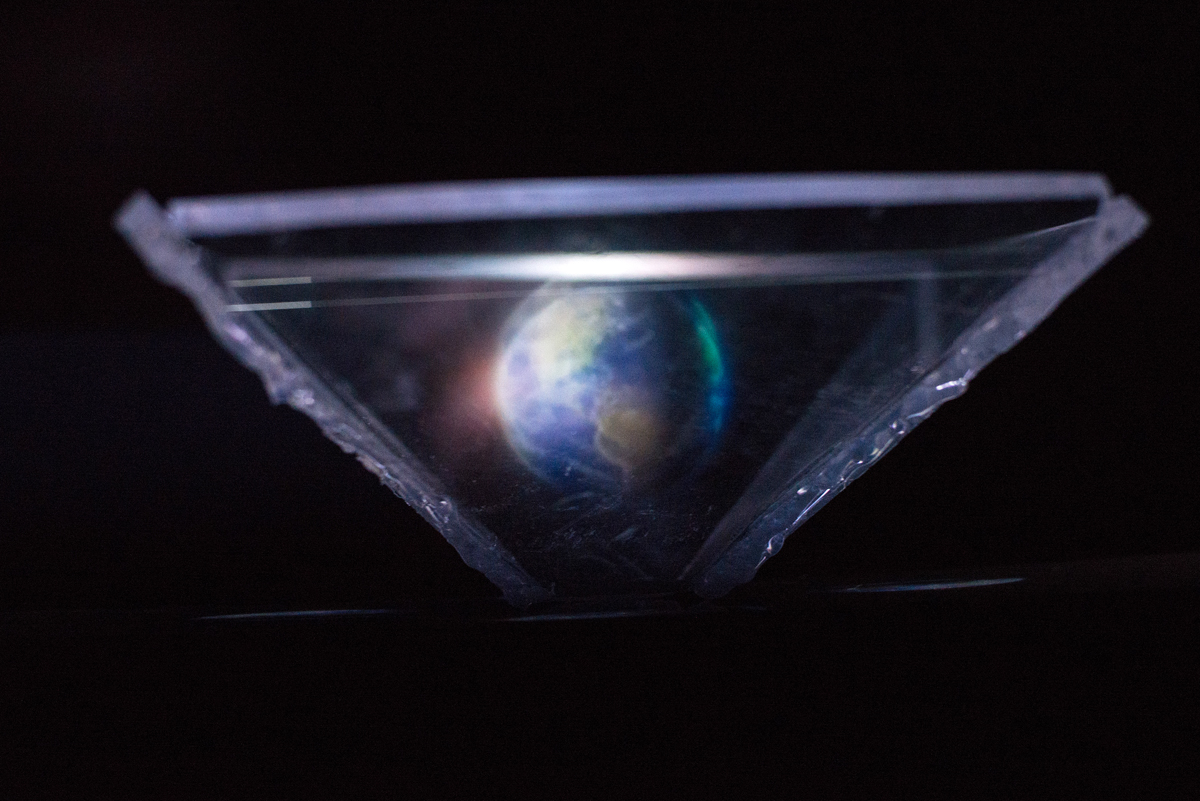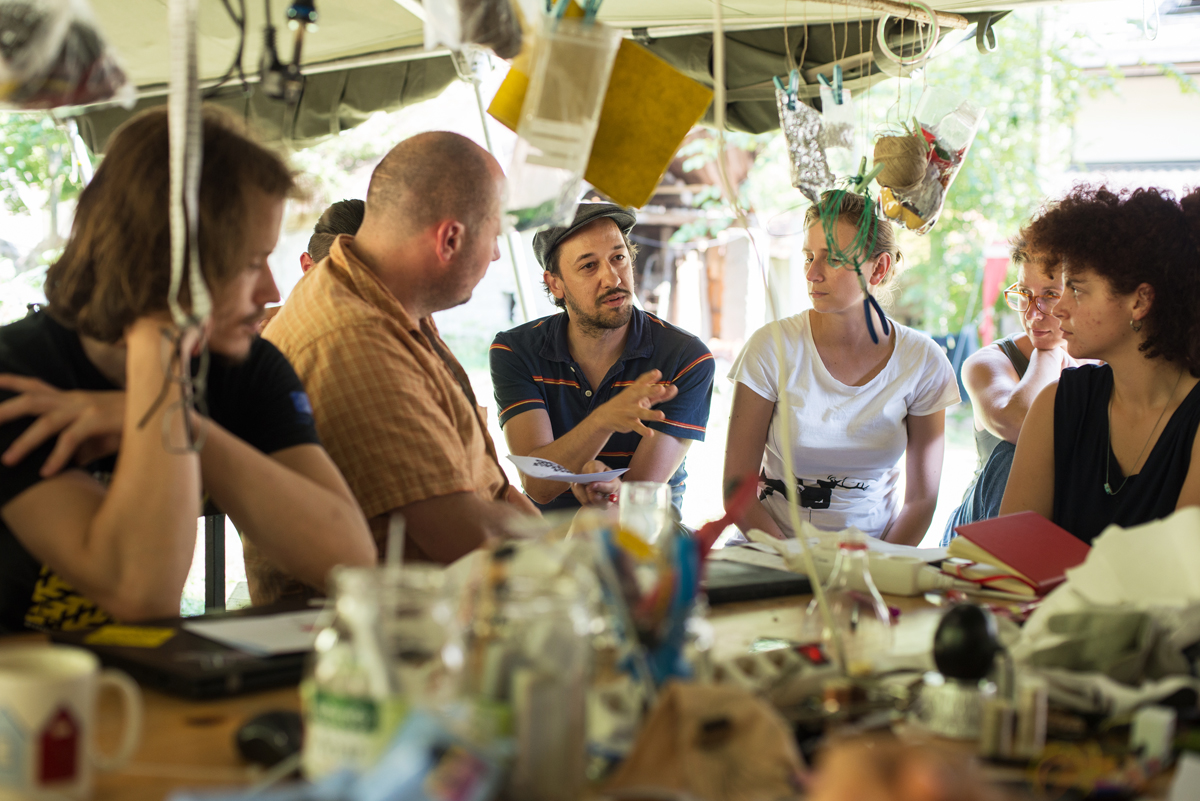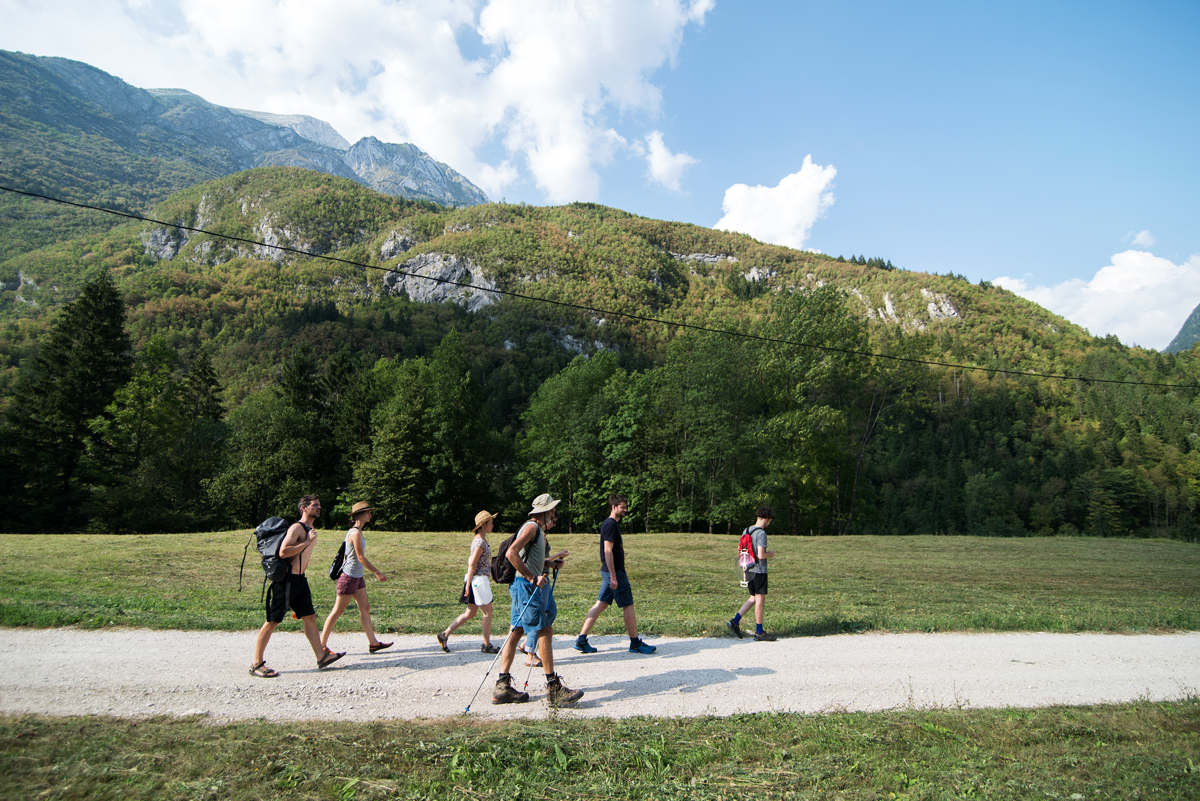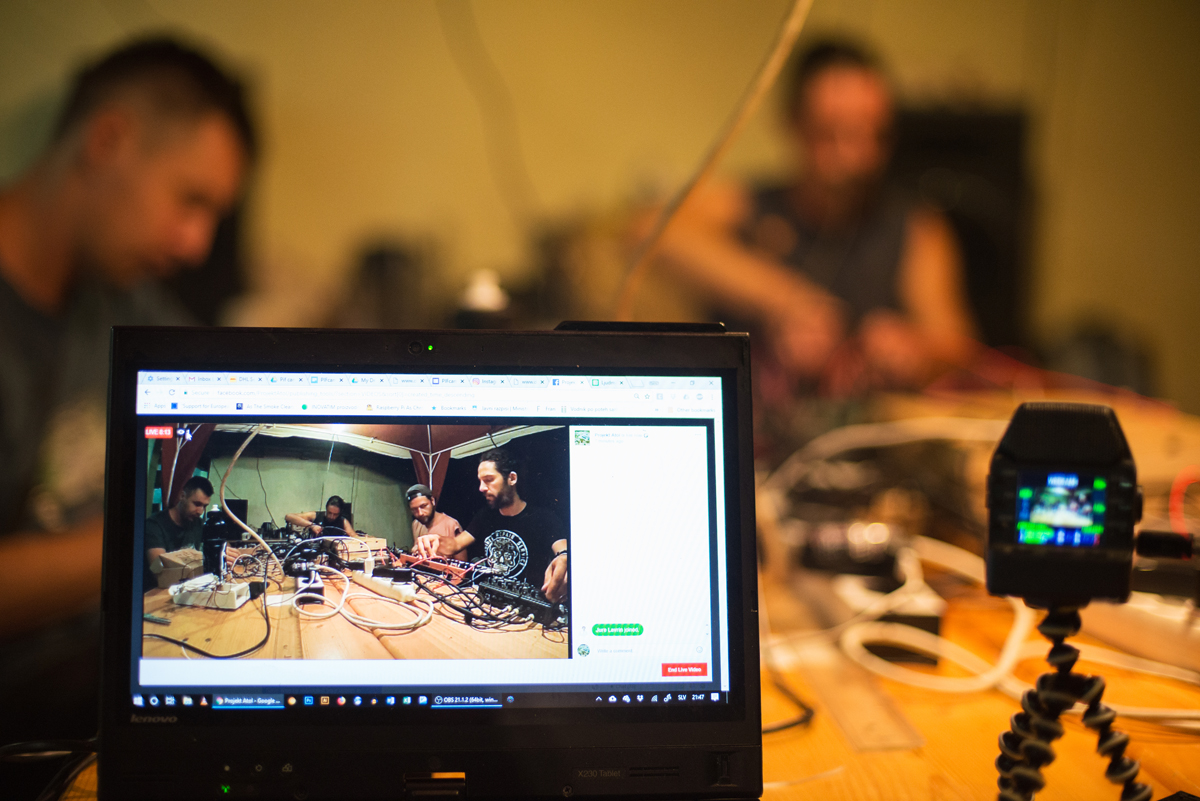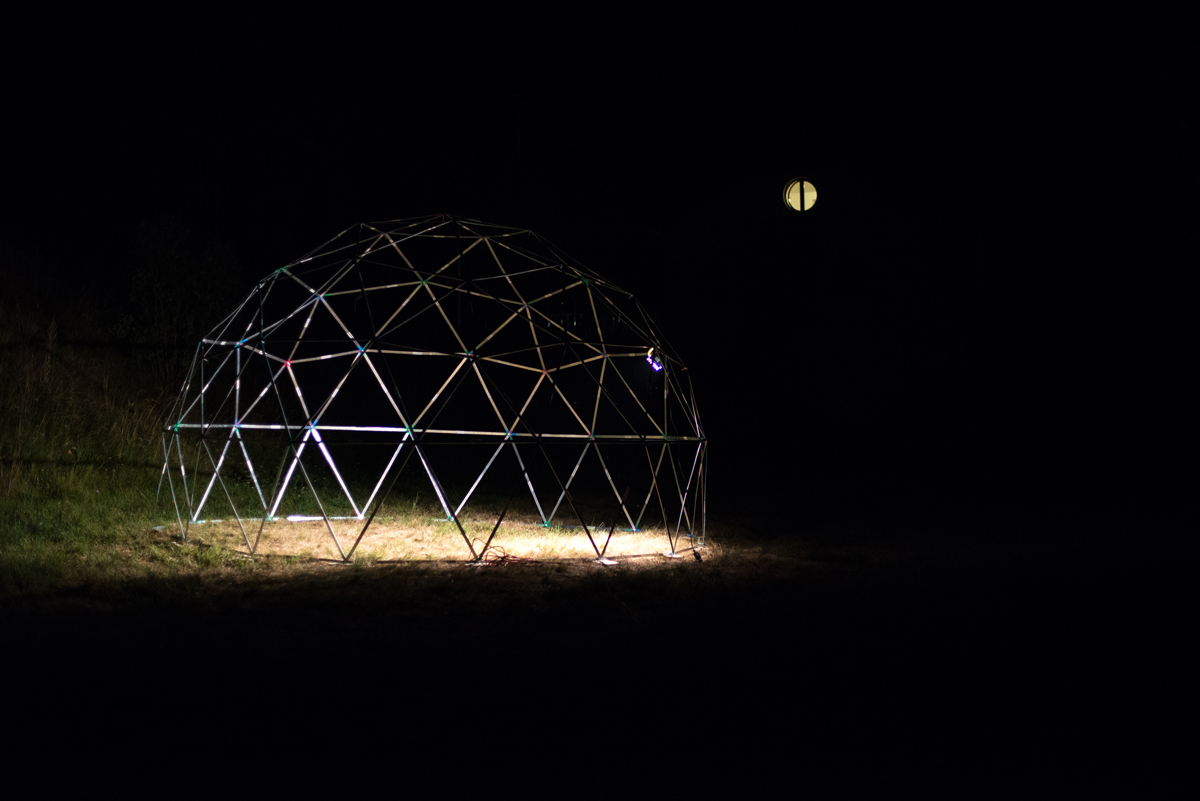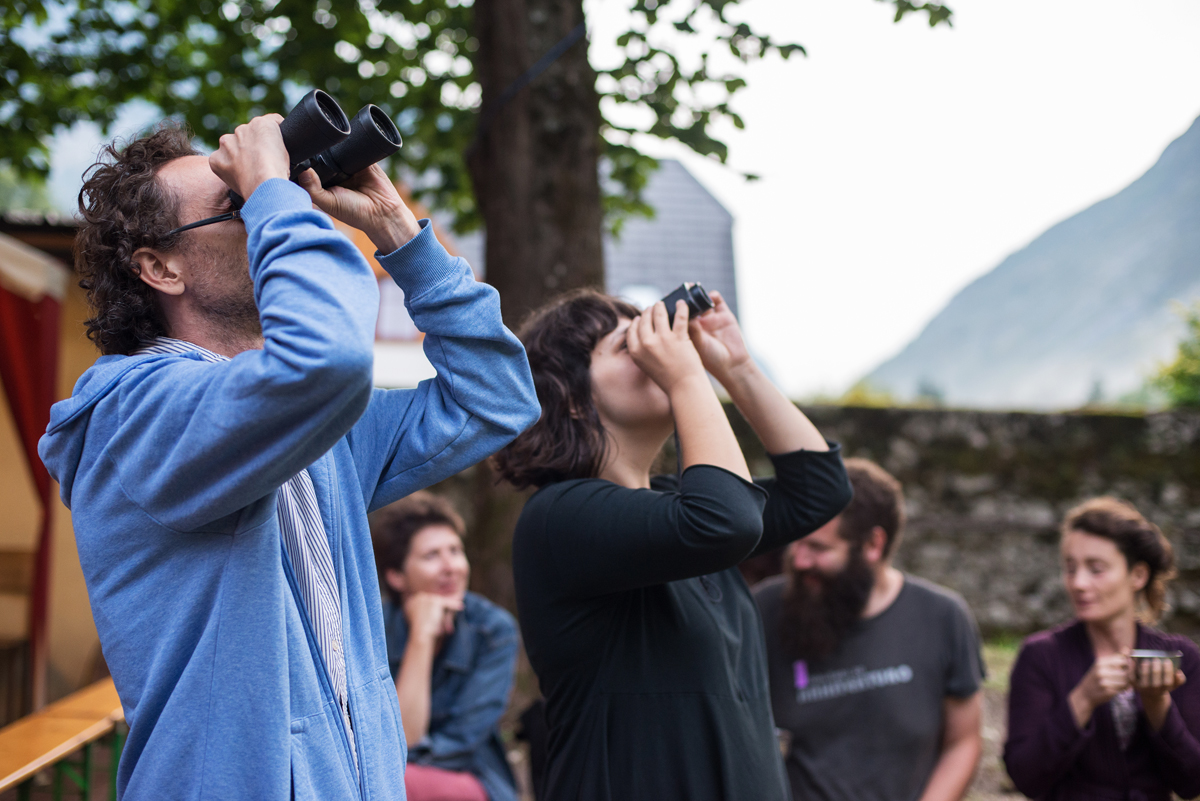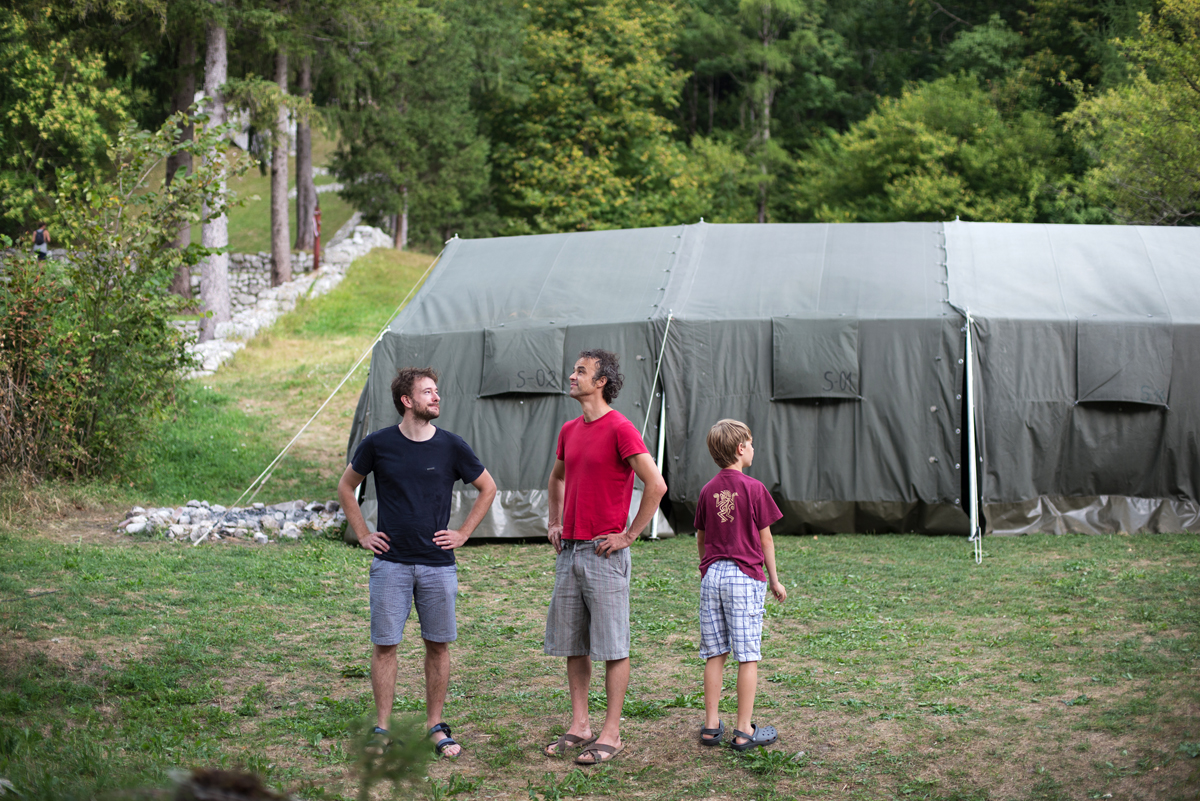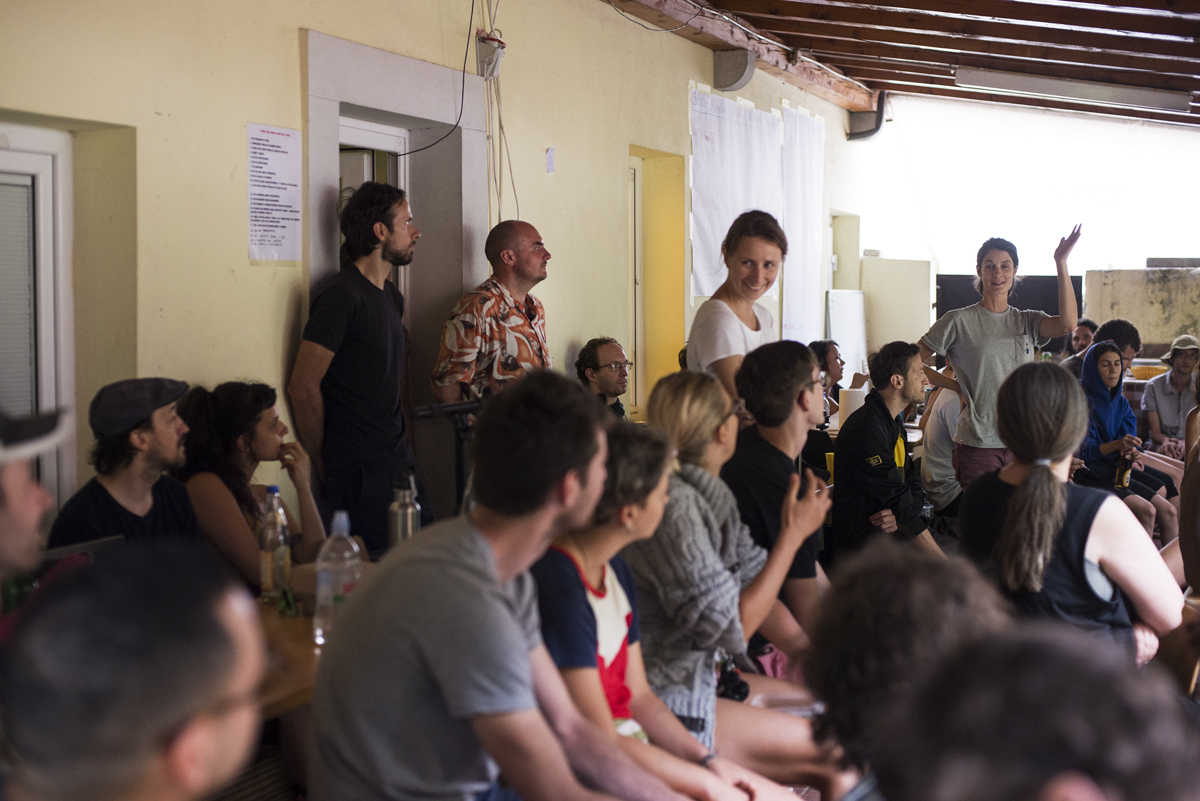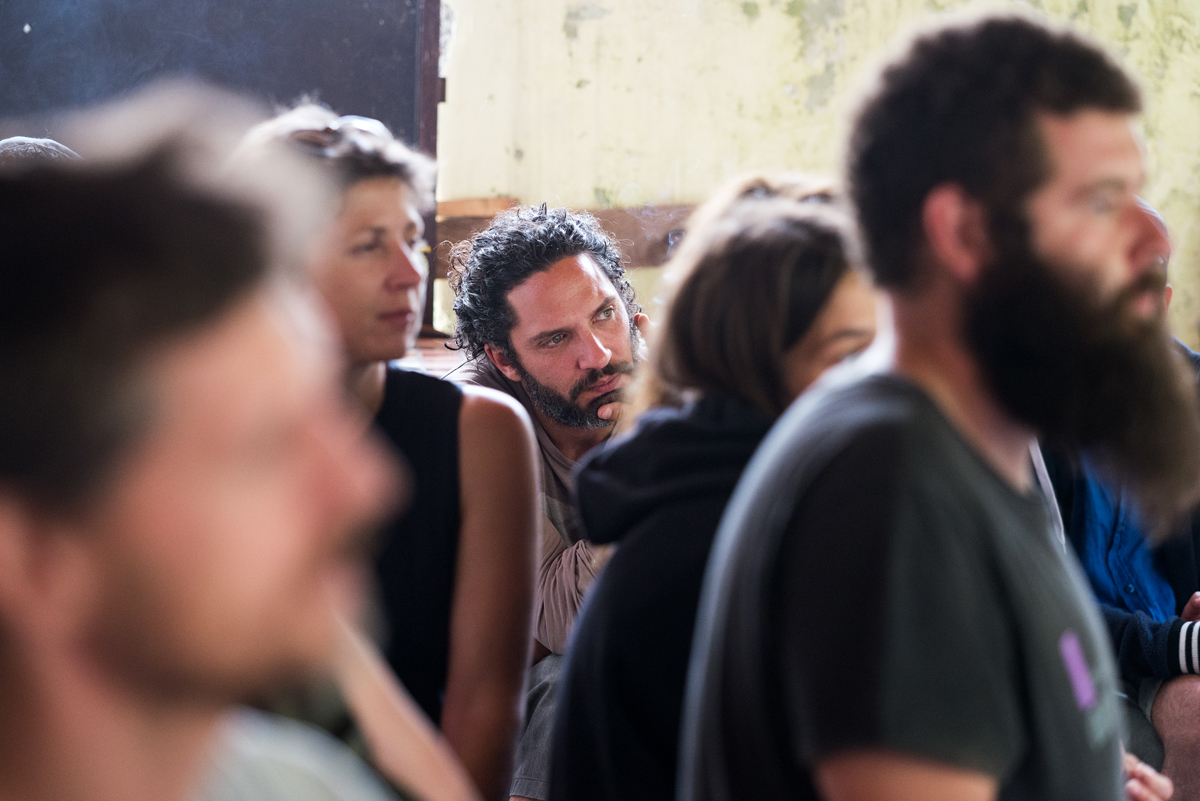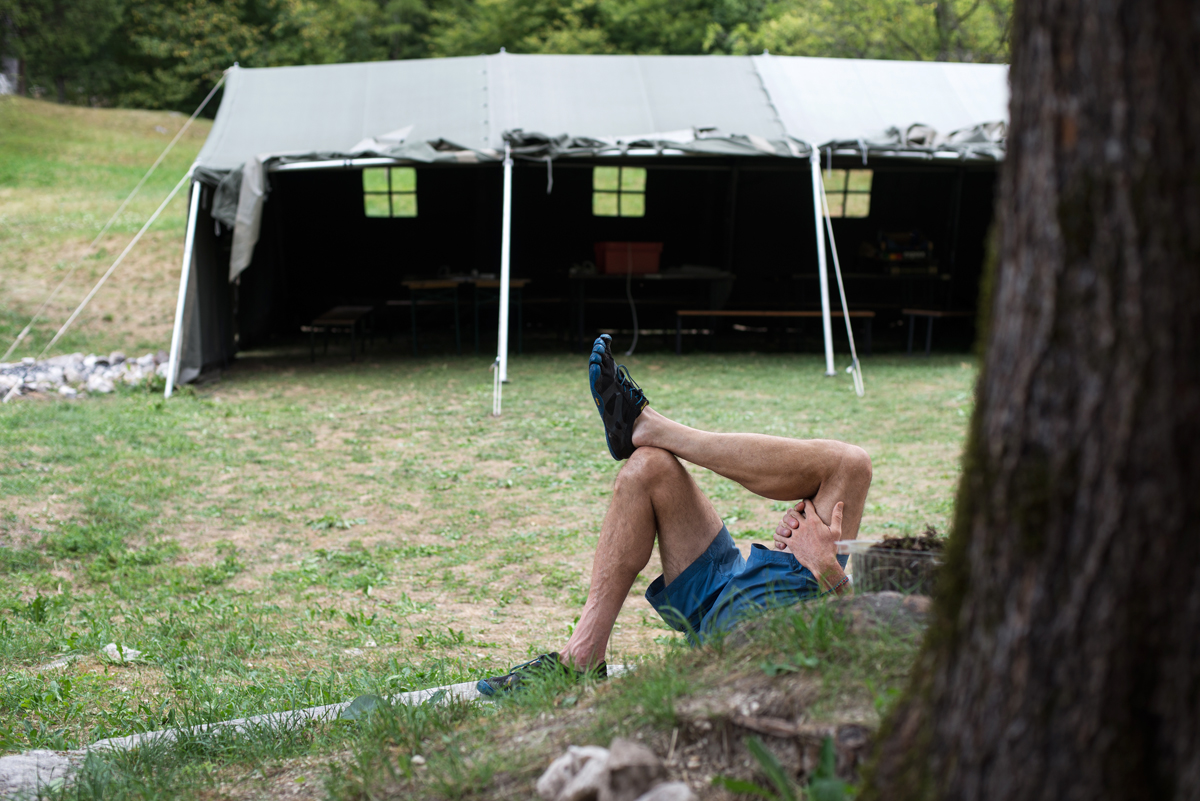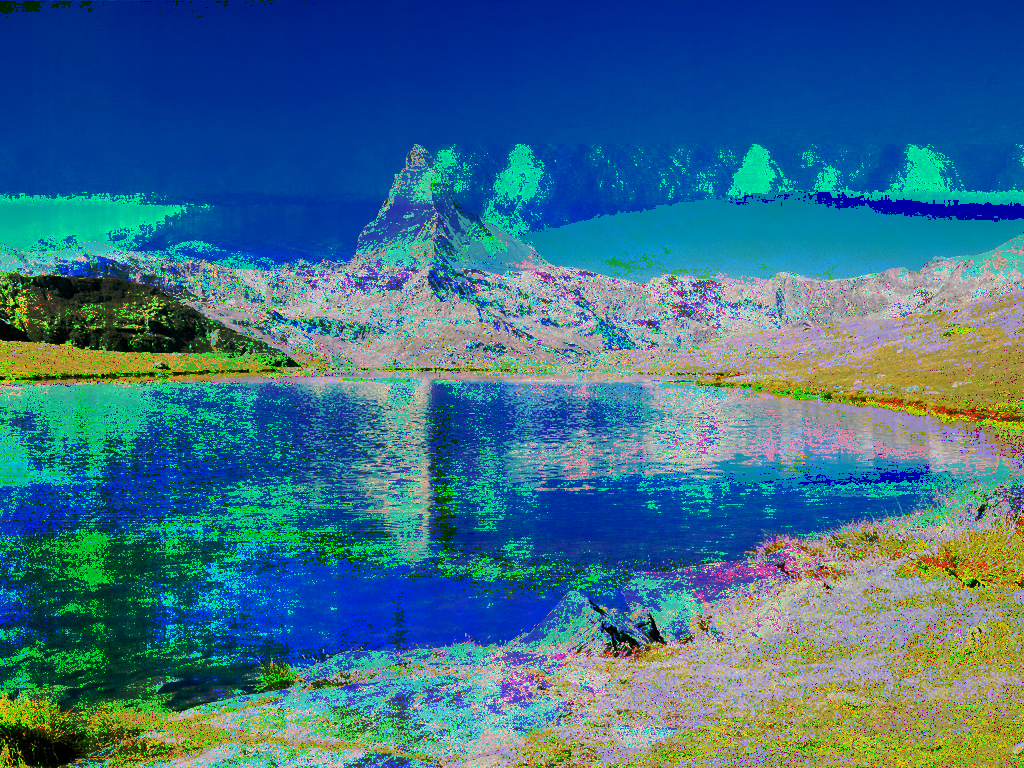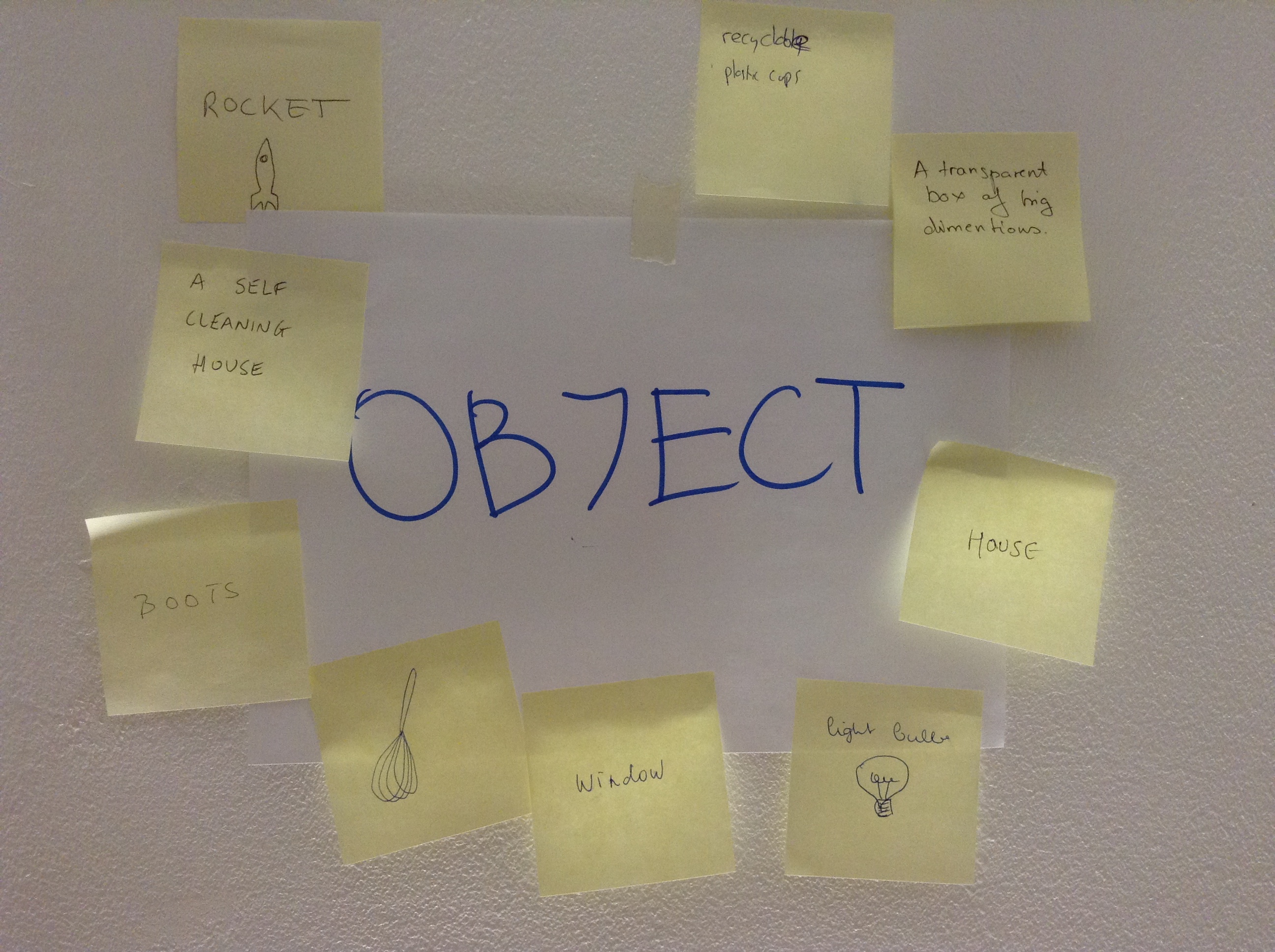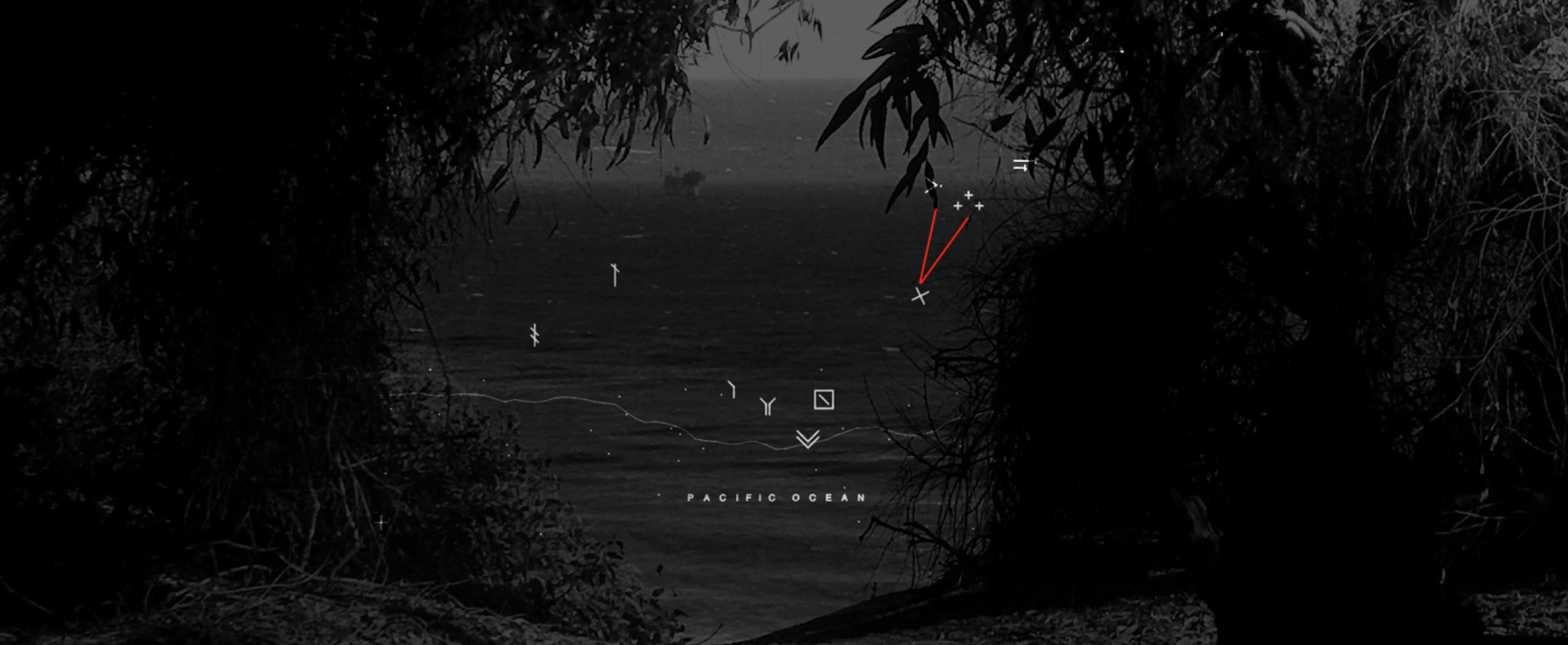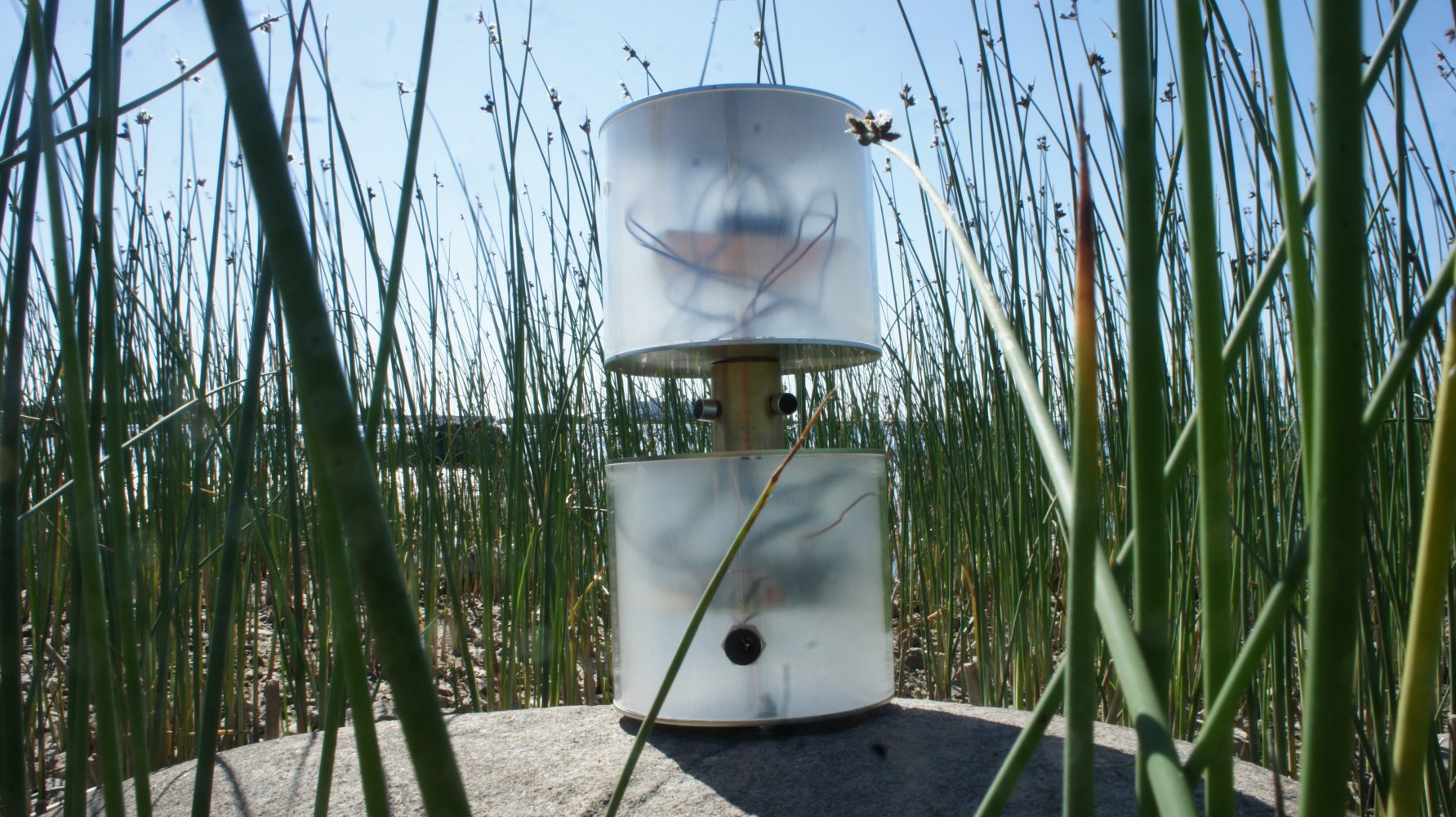The fragile ecosystem PIFcamp tries to integrate in is in constant peril. It is besieged from all angles by our ever-growing needs for resource materials and the pleasure driven commodification of nature. This heavily underscores the need to rethink the modes we operate with or within it, as every mishap can have dire consequences. In nature, everything circulates and at PIFcamp this rule applies in the same degree to ideas, skills, projects, knowledge, experiences, tasks… It is an ideology. A responsibility.
PIFcamp continues to adhere to the DIY and DIWO operating methods. Cooperation, integration and collaboration is what we nerds are great at. We sure are a handy tribe! Hands and the human ability to create take centre stage in Hannah Perner-Wilson’s Sense yourself making project as she and other participants plan to capture the processes of making with sensors and transform them to music.
In the short introduction to the project, Hannah spoke about self-awareness and our awareness of other-than-self phenomenons, be it on-going processes in our environment, other beings… She also stressed how important it is to act prudently and responsibly in regards to our raw materials and our surroundings. As gathering various resources is crucial to Sense yourself making, she distributed practical gathering aprons with big pockets she made for the easy storage of potential matter to be used in course of the project.
There was no stopping us taking our first hike with the local expert on edible wild plants Dario Cortese. We were not pleased to find out that more meadows have been mown this year than any previous year. Nonetheless, we managed to gather some common yarrow flower clusters, wild carrots and wild tarragon. Some of these plants will end up in our fermentation experiments (kimchi, kefir…) carried out under the leadership of Kristijan Tkalec and Ahac Meden.
Our kindhearted and to the hidden beauties of nature wonderfully sensitive resident electrical engineer Bernhard Rasinger, who made last year’s PIFcamp truly memorable with his laser show and oscillators, started his work on an algae experiment. He uses blue and red LED lights to promote the growth and photosynthesis of the algae he gathered from Soča river while storing them in plastic water bottles. He hopes the experiment could turn out to be a working prototype that would contribute to the amelioration of the air we breathe (a byproduct of photosynthesis is oxygen), as well as help to reverse the consequences of climate change.
Another PIFproject got started when the scorching sun lost some of its power and allowed Ljudmila’s founding father Luka Frelih to begin work on his 3D Dome, which enables scanning objects. For now the team focused on the construction of its metal frame. Later on they will continue with the installation of cameras.
The evening on the second day of PIFcamp climaxed in a pleasant jam session.
